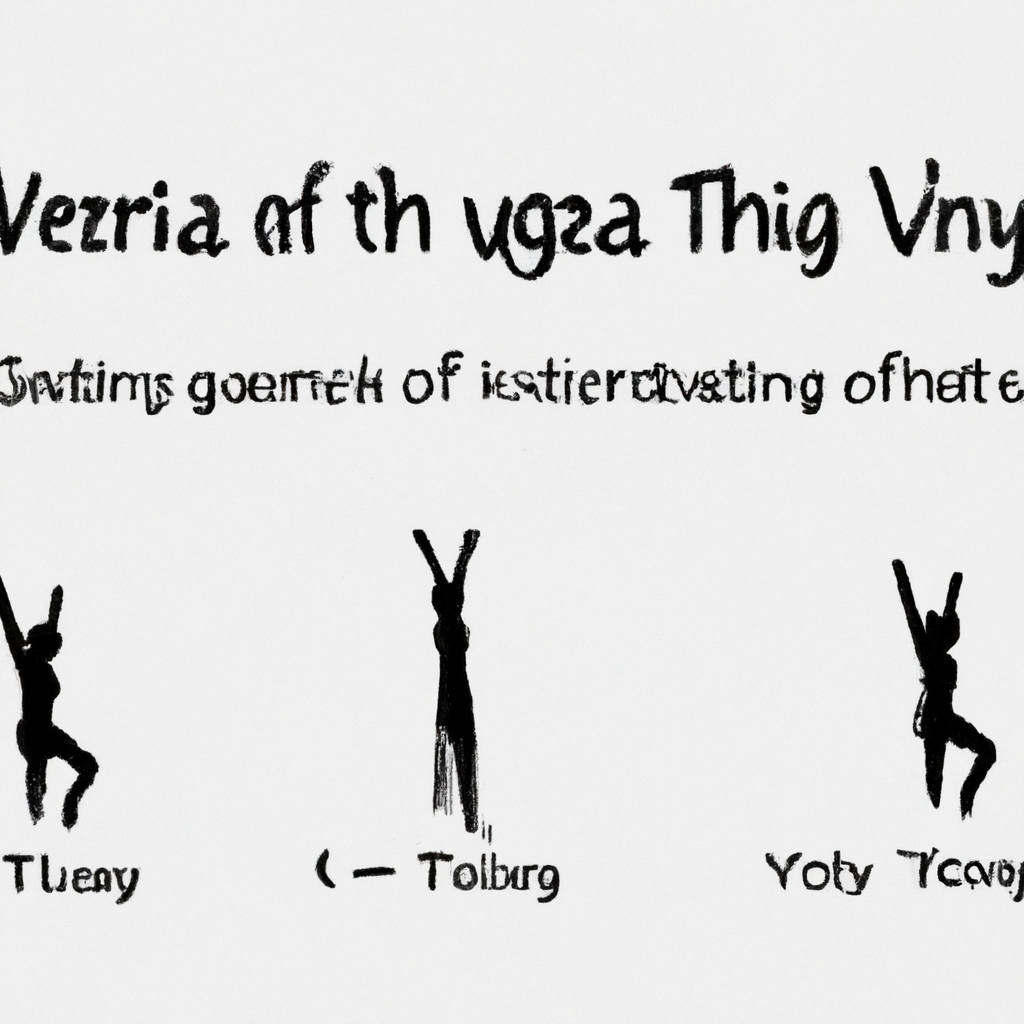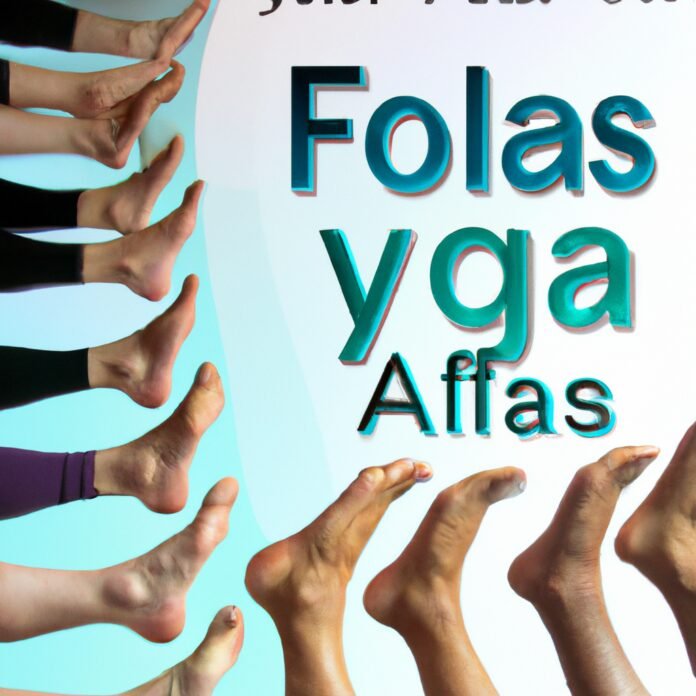For centuries, yoga has been practiced for its ability to improve physical, mental, and spiritual well-being. It has since become a popular form of exercise all over the world and the variety of yoga available is immense. This article is an exploration of “Yoga for All: Variations and Styles” and an examination how different adaptations of this ancient practice are helping people of all ages and abilities. So whether you are a beginner or a long-time practitioner, read on to find out more about the world of yoga.
1. Introduction to Yoga: Equity Through Variation
Yoga is a form of exercise that has been practiced for centuries, originating in India and spreading all over the world. The practice of yoga has come a long way from its early days; today, there are many different types of yoga to choose from. Each type focuses on different goals and levels of difficulty, allowing people of all fitness levels to benefit from the practice. Here, we will take a look at the concept of equity through variation when it comes to the practice of yoga.
Hatha Yoga is one of the more traditional forms of yoga and is a great choice for beginners. This style emphasizes holding poses and breathing techniques. It is a great way to become familiar with the fundamentals of yoga and to strengthen the muscles in the body. The poses and sequences are relatively gentle, making it ideal for people who are new to the practice.
Vinyasa Yoga is the most popular form of yoga today. This style is based on the Hatha practice but with a more active element. Vinyasa emphasizes fluid movement from one pose to the next. This style is great for people of any level of fitness; it can be practiced at a slower pace for beginners, or at a more intense pace for experienced practitioners.
Yin Yoga is a more restorative form of yoga. The focus of this practice is on relaxing the body and connecting with your breath. Yin yoga is a great option for those looking to relax, as well as for people looking for a more gentle practice. This style of yoga is excellent for relieving stress and allowing the body to relax completely.
Chair Yoga is a great option for people with physical limitations or for those who want to practice yoga without the need for a mat. As the name implies, this style of yoga uses a chair to support the body as it performs the poses. The use of the chair allows for more modifications and hand placement options, making it great for those with mobility issues or who need extra support.
These are just a few examples of the many different types of yoga that are available today. Whether you are just starting out or looking to take your practice to the next level, there is a yoga style that is right for you. Through the concept of equity through variation, yoga has something for everyone, allowing everyone to reap the many benefits of this ancient practice.

2. Exploring the Different Types of Yoga
Yoga is an ancient Indian practice consisting of various postures, techniques, and breathing exercises. Millions of people across the world have embraced this discipline as an effective way to relax, strengthen, and enhance mental and physical wellbeing.
If you’re interested in experiencing the wide range of physical and mental benefits of yoga by practicing yourself, then you need to know there are many types of yoga available. This post explores the most popular and widely practiced forms and explains some of the distinguishing factors that separate them.
Hatha Yoga is probably the best known and most widely practiced form of yoga. Hatha encompasses a broad range of physical postures, breathing techniques, and meditation techniques. Its main focus is on physical postures or asanas that aim to promote physical relaxation, balance, strength, and flexibility.
Vinyasa Flow is a more dynamic and energising form of yoga, where postures are linked together to form a ‘flow’. It is focused on synchronising your breath and movements to create comfortable, smooth transitions between different postures.
Iyengar Yoga is a more precise and introspective type of yoga. It puts emphasis on correct alignment of postures, and an intense focus on specific postures for a longer period. Props such as blocks, straps, and blankets are used to help you achieve and maintain proper alignment during postures.
Kundalini Yoga is a spiritual practice that focuses on activating energy stored in the base of your spine. This particular form of yoga combines physical postures with breathing, chanting, and meditation techniques in order to reach an altered state of consciousness.
These four types of yoga are the most popular and widely practised forms. However, there are many more variations that contain elements of each and are designed to address individual goals and needs. Whether you are looking for a gentle, physically-oriented form of exercise, a more spiritual practice, or anything in between, you are sure to find a type of yoga that suits your needs.
3. Making Yoga More Accessible Through Adaptations
Yoga can be a great way to stay fit, build strength, and improve your flexibility. But for people who are disabled or have a physical limitation, yoga may seem less accessible. Fortunately, there are several ways to make yoga more accessible – so that everyone can find a way that allows them to gain the benefits of yoga.
1. Modifications to Exercises
For those with physical limitations or disabilities, simply modifying exercises in a yoga class can make a huge difference. Instructors can provide modifications with props, such as straps, blocks, chairs, and walls, as well as alternate poses that can be done on a chair or in a standing position. For instance, instead of doing a traditional Warrior I pose with one foot forward, you can do the pose with one foot slightly behind you. This is a great example of how to modify a pose to make it more comforting and less physically demanding.
2. Zoom Classes
Especially in 2020, Zoom classes have become a go-to option for yoga. With virtual classes, there’s no rush to get to the studio, since you can do it right from the comfort of your own home. For people with physical limitations, this can be especially beneficial, since they can adjust the difficulty of a pose or do an alternate version without worrying about keeping up with the class. Plus, with virtual classes, the instructor can still provide feedback and guidance, and there’s also the added bonus of not having to worry about embarrassment or being judged by others.
3. Accessibility Equipment
In yoga studios and even some gyms, there are now tools and accessories designed specifically for disabled people. Specialized mats, straps, and wheelchairs may be available to help people with their practice. Additionally, gym owners and instructors should create an inclusive atmosphere where members feel comfortable taking part in yoga classes. This could include making sure that verbal communication is respectful, giving people options to practice at different levels, and providing appropriate accommodations.
4. Online Resources
For those just starting out, there are a number of online yoga classes available with instructors who specialize in teaching people with physical limitations. These classes allow you to practice with the help of a professional in your own home – videos, written instructions, and audio files break down poses in an accessible way. Additionally, there are online yoga networks that can help connect instructors with members, provide forums for discussions, and even give tips on how to modify poses.
Making yoga more accessible is about more than just providing modifications and tools. It’s also about having an inclusive atmosphere that respects everyone’s differences and abilities, and makes sure that everyone feels welcome and comfortable to take part. With a combination of modifications, adaptation tools, and online resources, yoga can be a great way for everyone to gain the physical and mental benefits of this practice.
4. A New Horizon of Inclusive Practice: Reaching Yoga for All
Yoga, has been gaining worldwide popularity for many years, yet the close proximity to the practice of wealthy cultures often left many parts of the world cut out of this profound journey. From within the industry, the responsibility fell upon us as practitioners to help all of our communities to benefit from such a beautiful practice.
A new horizon of inclusive practice has now emerged, taking away the exclusive image of yoga and enabling us to reach out to those who were often left out. In today’s age, anyone regardless of class, race or background should have the opportunity to benefit from the asanas and mindfulness that yoga provides. The following are some ideas to create an inclusive practice:
- Making Yoga Affordable: For many, financial barriers keep them from achieving an ongoing practice. Consider discounted rates or offering a pay-what-you-can option for those in financial hardship.
- Inclusive Language: Words you use have a huge impact to form feelings of inclusion and exclusion. Avoid words such as ‘perfect body’, ‘naturally flexible’, and ‘limber’ when addressing poses.
- Create a Safe Space: If a student feels comfortable in the yoga studio, they will be more likely to come back and grow in the practice. Respect everyone’s journey and encourage a sense of community.
- Teaching Modifications: Using props helps those who are unable to do certain poses due to physical or mental limitations. Offering different modifications of poses also helps all students to feel included.
By taking these initial steps, we can start to move towards a more inclusive and diverse practice, enabling all of our communities to enjoy the many benefits that yoga brings. Through continued collective efforts, both teachers and practitioners, we can ensure that yoga is accessible to all and thus, create a brighter future for many!
Mental health and self-care have always been vital, but the current pandemic has magnified these essential tools. By having a safe space to practice, with regards to inclusivity, we empower our communities to take charge of their wellbeing and explore the options available to them.
Yoga is a practice that can help people of all ages, sizes and abilities to live a more connected life. Through its various styles and variations, yoga offers something to fit everyone’s needs. And with so many resources available today, from easily accessible classes to powerful online tutorials, any practitoner can find a style and practice that’s just what they need!

